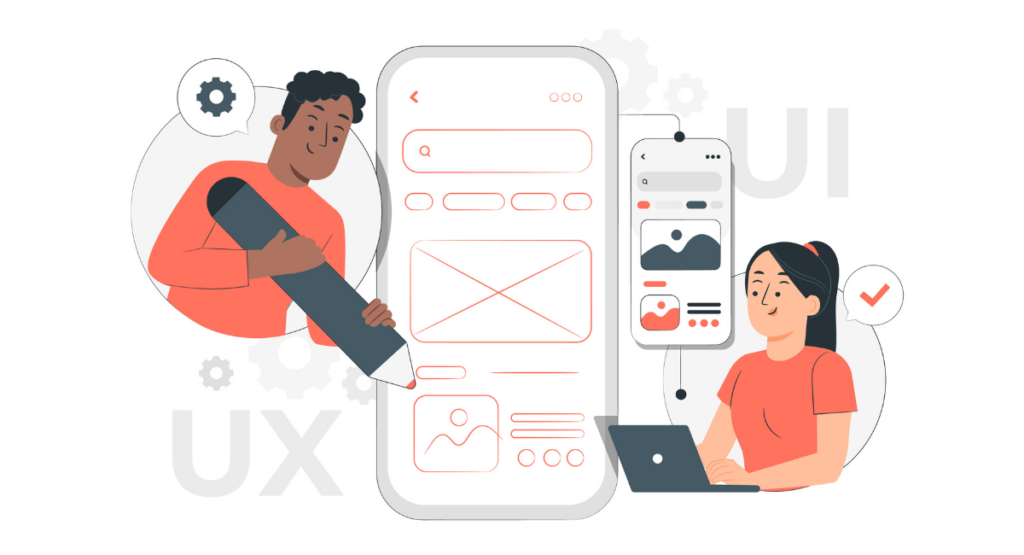User Interface testing is the segment of a software development lifecycle. The process involves testing whether the visual and interactive elements in a software application work as expected based on predefined requirements.
From buttons and text fields to images, sliders, and consistency in layout, UI testing examines everything with which a user will engage. Its primary aim is to detect any UI or functional issues before the product reaches the end-user.
Such testing tends to improve the quality and usability of the software. With this exhaustive testing, developers are better placed to offer a seamlessness user experience that matches all expectations set by the design and functionality specifications.
Importance of UI (user interface) Testing

Verifying Functionality
UI testing is very paramount in ensuring that the functionality of applications is checked on various devices and platforms. It guarantees that every single component comprising the user interface functions as it should.
These may comprise buttons, links, gestures, input fields, and other interactive features which exist within applications. The said features are checked against their functionalities for performance to ensure consistency in application under different conditions.
It confirms the functional integrity of the UI elements. Developers can avoid common problems, like actions not responding or processing the wrong way, which kills the user experience.
Enhancing Usability
Improving usability is moreover one of the key aspects UI testing focuses on. It basically refers to a test that evaluates the app's design layout and whether or not all the subtleties are self-descriptive.
How easy is it for a new user to access the app to find information and get done with what they wanted to do without getting confused or frustrated regarding which path is taken also taken into consideration.
This includes some really basic features like consistency in layout, color themes, font size, and feedback of interaction. Identifying and then rectifying the usability issues in view of the results of the test, developers can make sure interfaces become specially designed and optimized for the need of users, which makes their time with the product more engaging and satisfying.
Benefits of UI Testing

Improved User Experience
One of the most significant benefits of UI testing is the overall improvement in user experience. When an interface is thoroughly tested and optimized, interacting with an application becomes relatively user-friendly and leads to a smooth, enjoyable journey for the user.
Users are less likely to suffer from the numerous bugs, glitches, and sometimes confusing points that hit them off the line of their app. A well-done and tested interface can be optimized for quick loading and more responsiveness, which further enhances the experience.
Better user experience automatically implies broader success for the software because it can upgrade user interactions in terms of both frequency and duration.
Increased Customer Satisfaction
Ultimately, frequent and rigorous UI testing can enhance customer satisfaction to a large extent. Customers love a stable, efficient, and navigable interface that gives them the feeling of a seamless experience.
If users perceive their interaction with the software as productive and hassle-free, this will raise their overall satisfaction level. Quite often, all it takes is positive feedback, repeat usage, and even recommendations to other prospective users.
- Meeting Expectations: UI testing makes sure that the application fulfills or goes above customer expectations. It bridges gaps between user preferences and requirements in the design of a UI for businesses to come up with products more oriented to their set target audience.
- Improving Brand Image: Testing assures the business of a good brand image. Positive regard is likely to be cast by a user on a brand which offers smooth, agile, polished, and well-engineered software solutions.
Higher Conversion Rates: Applications that are user-friendly and go through seamlessly usually realize higher conversion rates. Users tend to get more inclined toward finishing the desired action, like transactions or signing up for the service, when they don't feel frustrated during their process.
In the final analysis, UI testing turns out to be an intrinsic part of software development. It checks not only whether all the components of the user interface work well but also provides room for improvements to usability.
Hence a better user experience and higher customer satisfaction actually, an asset in which every business has to invest in order to be successful in an ever-more competitive market environment.
Best Practices for UI Testing
Test Automation Tools
Appropriate automated testing tools in UI testing are very vital in improving efficiency and accuracy. These tools can emulate every action that the user may make with the interface, thus helping teams effectively detect visual and functional problems in the UI.
Therefore, it is important to choose a tool that will integrate well with your development environment and support the technologies used in the UI. Among them, the popular ones are Selenium, which is best for web applications, and Appium for mobile app testing.
Automation tools not only accelerate the testing process but also support the running of repeated test cases, reducing human errors, and saving time for testers to focus on more complicated test scenarios.
Collaboration between Developers and Testers
Effective collaboration between developers and testers is an important thing in the success of UI testing. This partnership enables both parties to understand the requirements and functionalities from each other's perspective, hence the quality assurance of the final product as well.
Continuous liaison in this regard among these teams can help identify UI issues early in the cycle of development, at which time rectification will be easier and more economical.
In this regard, techniques like pair testing can be very useful, where a developer and tester work together on testing tasks. Such collaborative practice improves not only the quality of testing but also cultivates a culture in which the quality of the product is everyone's responsibility.
Continuous Integration
Another best practice that considerably enhances the quality and reliability of user interfaces is including UI testing in a continuous integration pipeline.
Continuous integration means integrating all working copies by all developers into the shared mainline several times a day and running automated tests after every change.
Why not combine UI tests with all of this? You can be sure that no changes in the code you are making can have a bad influence on the user's interface.
Integration problems can be detected and solved as early as possible in one of the fundamentals of this practice, which minimizes the potential risks of big mistakes during the development process.
Continuous UI testing in a CI pipeline allows one to have faster releases, but with higher confidence in software stability and user satisfaction.
Book a Demo and experience ContextQA testing tool in action with a complimentary, no-obligation session tailored to your business needs.
Conclusion: Enhancing Software Quality through UI Testing
UI testing has become integral to the software development life cycle, proving the importance of functionality and user experience.
Attention paid to the user interface ensures that the software not only complies with specifications ratified for its design but also provides an easy, efficient, and delightful experience to the users.
This process assists in improving the quality of products and decreases the potential risks involved in product issues that may arise after launch, thus enhancing user satisfaction and loyalty.
Through communicative UI testing, a firm will be able to sustain its competitive advantage in this market by providing strong, user-driven products.
Recall that a well-designed user interface encourages user engagement and successful interactions that are quite crucial in this digital era.
Also Read - How to crack QA interview?
We make it easy to get started with the ContextQA tool: Start Free Trial.
